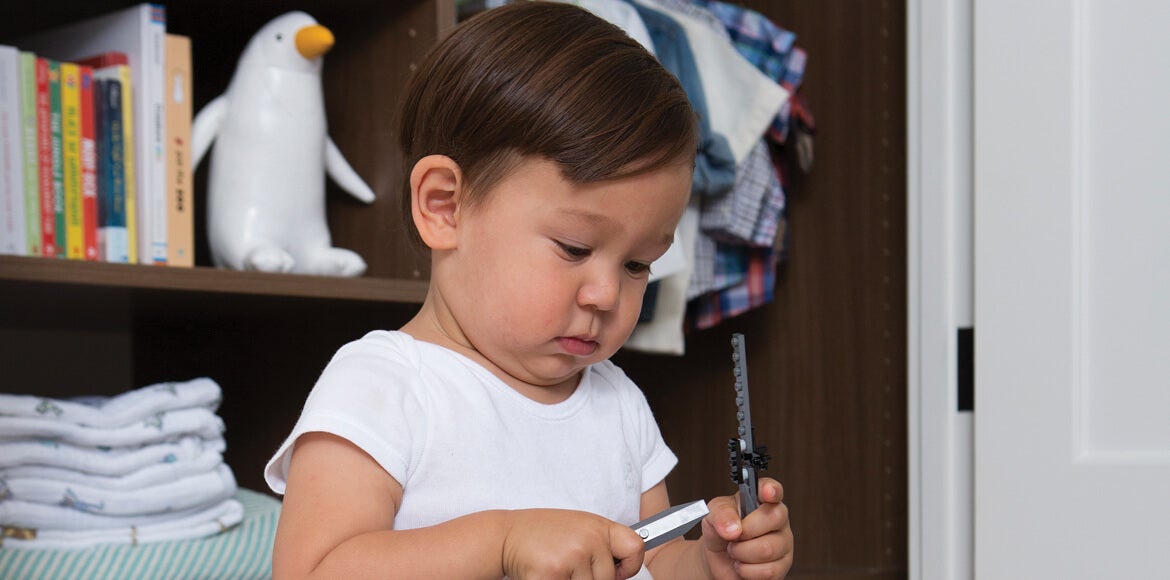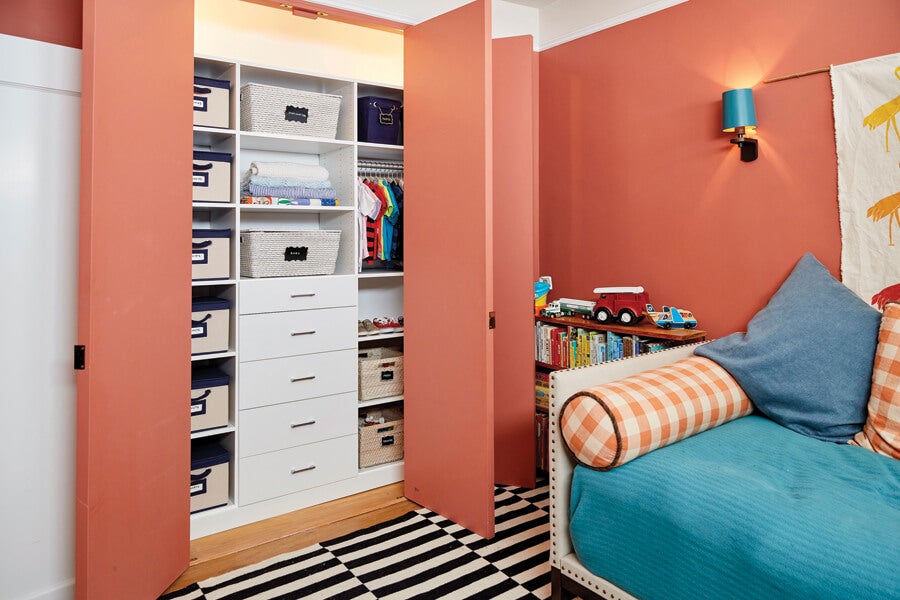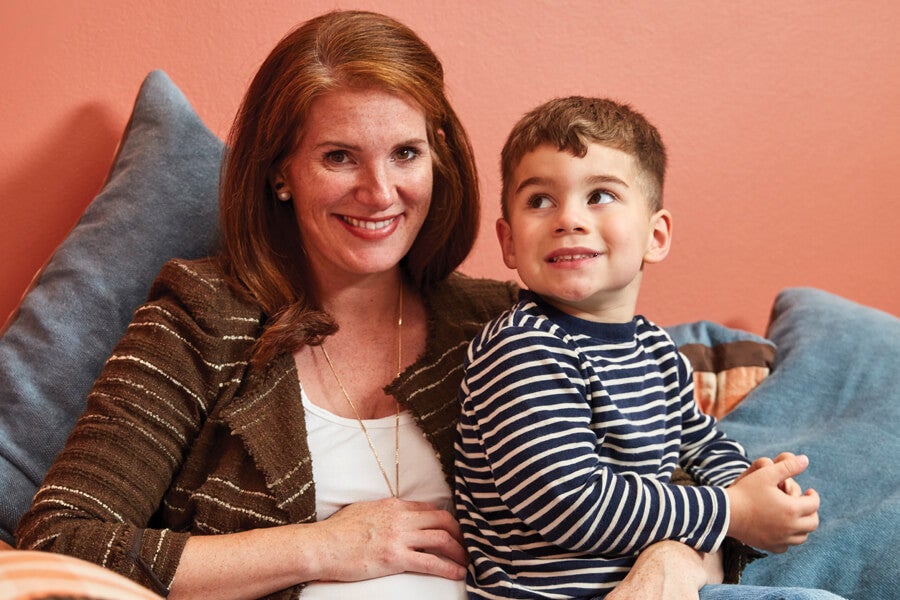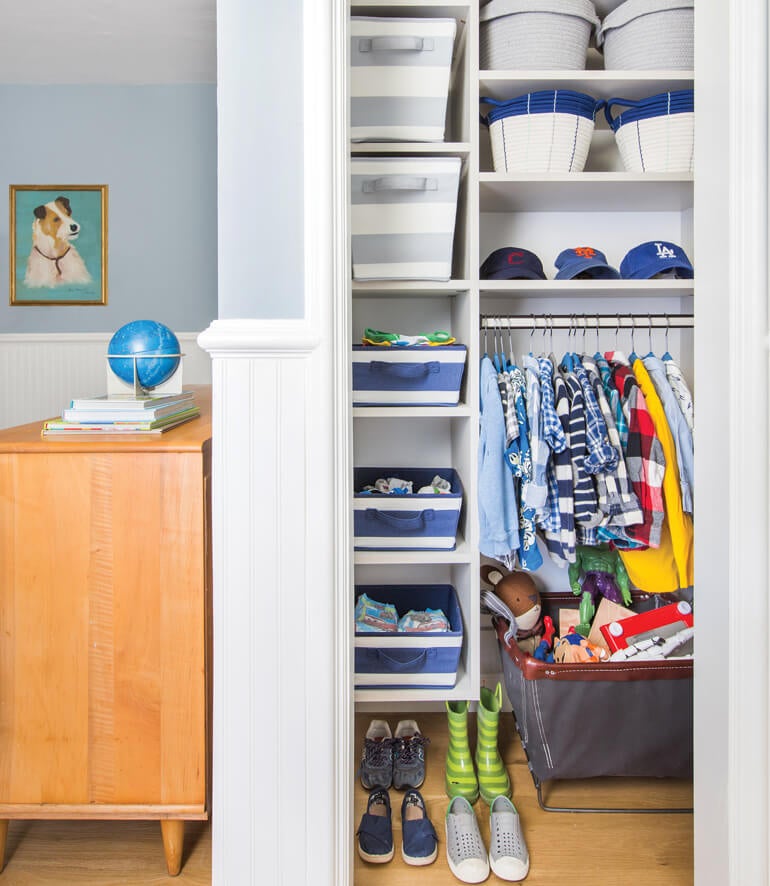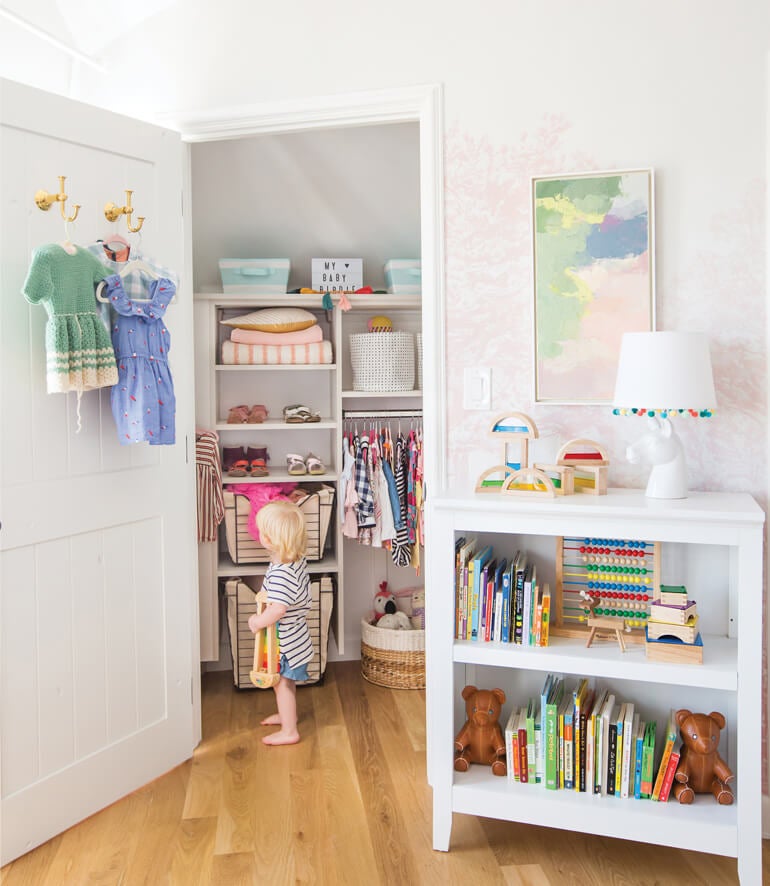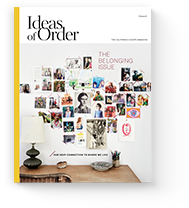An organized nursery can be a room for your child to grow—neater
He’s a heartbreaker—and a home wrecker. Even at his tender age, baby Quincy has accumulated admirable collections of blocks, books, stuffed animals, and action figures—not to mention a cache of Legos that if swallowed are deadly and if stepped on disabling for parents and kids alike. It’s a minefield in there.
There’s not a mother or father alive who doesn’t long for a perfectly organized house, where life isn’t a battleground for order but a peaceful armistice where parenting skills can shine and children prosper. Perfection, however, is not an option when it comes to living with kids. Organization, on the other hand, is an obtainable goal—and for the health and happiness of the family, a goal that’s increasingly important to implement.





